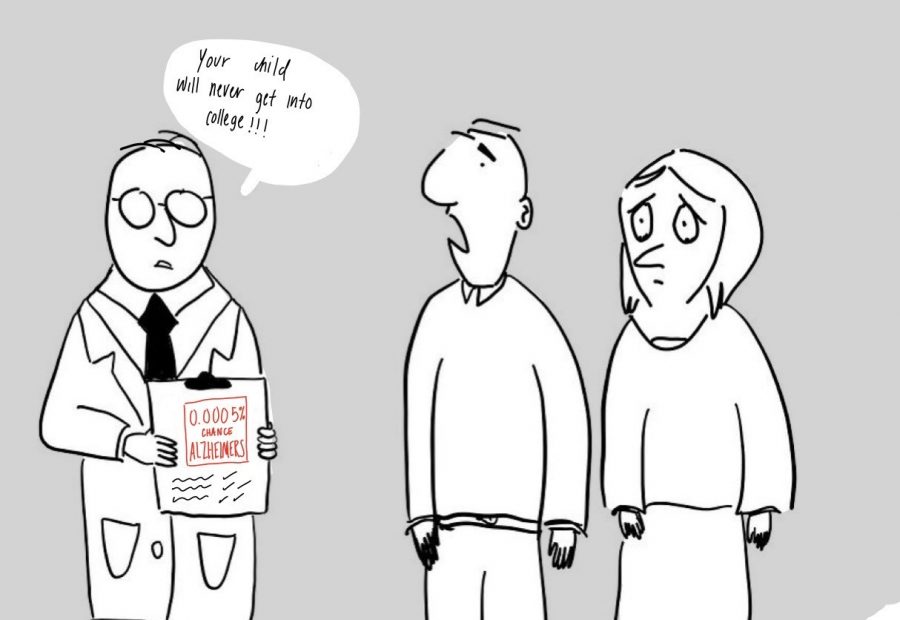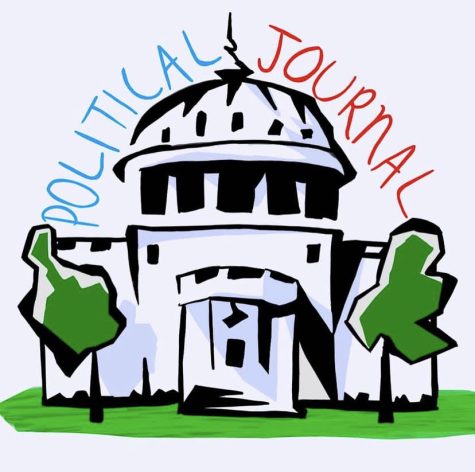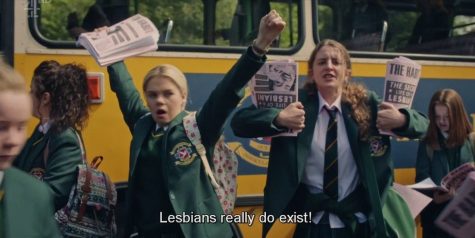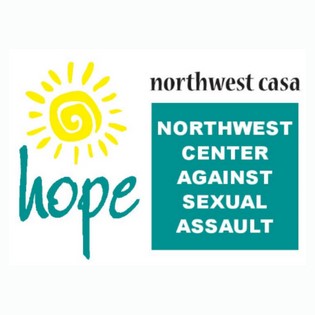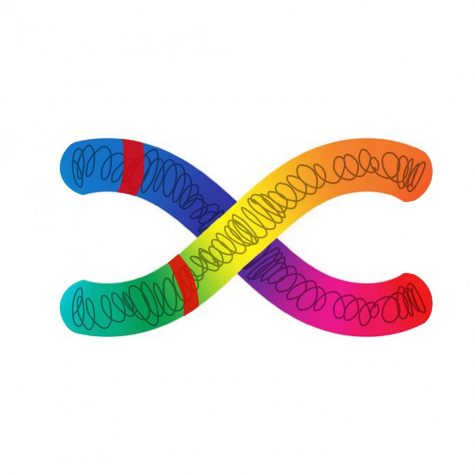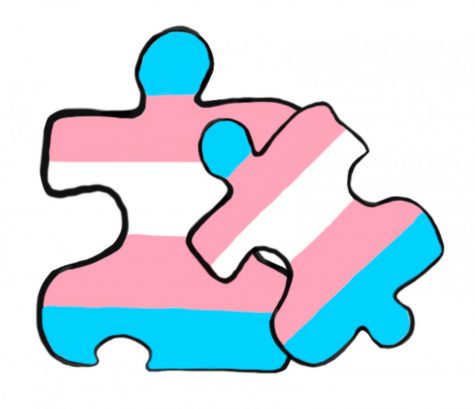Mutations Create People: The Debate Over Selective Abortion
November 16, 2021
The belief that every human life holds infinite value pervades time and religions—existing as a fundamental truth to human nature. Yet, with accessibility and technological advancements rapidly increasing, more and more mothers legally test their fetuses for genetic conditions, such as Down syndrome, and perform a subsequent abortion upon a positive test. This practice—prenatal testing followed by a selective abortion—reflects questionable beliefs. How can every human be invaluable if the mere knowledge of a fetus’s disability is enough to strip them of life?
Currently, hefty price tags and unknown health effects limit the scope of this practice only to mature, wealthy, and “highly motivated” parents. In addition, its potentially ableist implications only apply to a small minority of disabled people in the population. Therefore, as of now, this issue lacks a large-scale, population-level impact as well as holds little personal significance to most. However, the expeditious inventions of more accurate technologies, the growing “knowledge is power” mindset of prospective mothers, and the disproportionately extreme effect selective abortions have on a small minority of disabled people dub this issue as one still worth consideration. New testing methods emerge concerningly fast with improving levels of accuracy. The past 10 years have seen a rise in the usage of chromosome karyotyping tests, which hold a high level of certainty in determining a fetus’s major genetic conditions (such as Down Syndrome and Edward’s Syndrome) to microarrays, which screen thousands of individual genes for deletions/additions, small mutations which may ultimately not cause a disability. This wide range of options available to parents thus created the mindset that ‘knowledge is power’, which pressures mother’s into getting tested for the ‘safety’ of their baby. What actions they partake in after test results return, however, lies the potential for ableism, or discrimination against disabled people. Many families choose to screen their fetus, knowing that the results will not result in conditional termination, but information that better prepares them to seek additional help—such as specialized doctors or support groups. Alternatively, families also choose to screen their fetuses with a selective abortion in mind based on the result. Numerous disability advocates encourage the former path of preparedness; the latter path proves more contentious as it exhibits the implied belief that such an abled body child is worthier of life more so than a disabled child. This preference for a child without disabilities suggests that one’s genetic condition predetermines one’s quality of life, as there exists no fundamental difference between the two unborn fetuses otherwise. The resulting discriminatory preference compromises how our society accepts disabled children’s births; society’s perception of disability ultimately plays a larger role in determining a disabled person’s quality of life than that of the disability itself.
In this article, I do not attempt to critique the individual choices of a family, as each experiences a large number of unique factors which permute into an infinite number of individual scenarios—all of which culminate in an emotionally and physically straining decision that I hold no entitlement to judge. Instead, I intend to examine what ableist implications lie in the existence of such a choice.
A popular, though flawed, framework approaches disability as a disease—the eradication of which benefits everybody—the disabled, as well as society. For example, after interviewing hundreds of potential parents, Bonnie Rochman, author of The Gene Machine, determines that most parents who choose selective abortions justify that action as one which reduces the suffering of their potential child. In addition, of 200 adults surveyed, some, though only a limited few, described selective abortions as a necessary practice which benefits society by eliminating those who ‘contribute less’: “When I plan to have kids, I will want to make sure I’m bringing healthy children into this world that can grow up to be productive members to this society” (Steinbach). Such beliefs problematically define one’s level of suffering and ability to contribute to society as qualities that certain genetics biologically predestines. These principles—the desire to minimize a child’s suffering or improve society with subsequent generations are important beliefs. However, in this context, the interview/survey subjects drew conclusions from a non-disabled perspective.
In reality, selective abortions do not avoid preventable suffering to the individual because many disabled people do not view their condition as suffering. Disabled people “perceive themselves as healthy, not sick, and describe their conditions as givens”; this is in contrast to how abled bodied people perceive disability, which is in the context of “acute illness or sudden injury” (Jones). A distinction between a disability and a disease exists, which may further clarify how disabled people do not consider their disability as suffering. Many disabled people consider their condition as normal and adapted to—just as a woman perceives their period as a given, and the experience of monthly cramps as an adapted routine, not a basis of suffering1. On the other hand, a disease is a sickness that deviates from one’s normal conditions. For example, lung cancer is commonly considered a disease because it suddenly changes one’s physiology, such as one’s ability to breathe steadily, until it can be remedied. One’s disability cannot be eliminated from their life, like chemotherapy can eliminate cancer. A disability is a condition that lasts permanently throughout one’s life and therefore deserves consideration under that framework. As such, prenatal testing and selective abortions effected on the sole basis of eliminating disability differ from traditional medical technologies because they do not cure a disease, but attempt to eliminate disabled people—ultimately framing their lives as ones with questionable worth.
People without a disabled perspective also commonly attribute a disproportionately large weight to how that disability will affect the future child. This perspective, deemed the synecdoche argument, causes potential parents to “mistakenly allow one trait to stand in for the whole child in evaluating prenatal testing and termination decisions… a preoccupation with what is trivial and an ignorance of what is profound” (Steinbach). The termination of a fetus at such an early age based only on a condition reduces one’s potential agency and capacity for human uniqueness down to a fate of genetic determinism. This conclusion biologically destines all positive or negative experiences as solely attributable to their condition. Yet, time and time again, this fate proves false as disabled people find personality and love—living to the fullest humanity can offer.
In this way, disabled people are capable of living quality lives—which is all anyone should need to be considered valuable. It is true that most disabled people with neurodegenerative disorders may never discover a cure for cancer or walk on the moon. In truth, most non-disabled people will never accomplish these feats either. This traditional perspective of what makes a person valuable need not play a role in their value nor quality of life at all. Indeed, when a child is reduced to what they can ‘offer society’ in this way, the purpose of reproduction begins to look more like “value…not dissimilar to…agriculture” (Franklin). Such thinking creates risky attitudes towards the goal of reproduction in the first place as well as defies the fundamental belief that all humans are of equal value. Instead, the perspective that one’s value to society, and the ability to find fulfillment within their individual niches, holds distinctive worth that is indispensable and immeasurable is truer to the actual human condition. Whether it is “their preference for chocolate ice-cream over strawberry; their passion for football or ice-skating; their love of jazz or hatred of opera; their great skills as a board game player or as a computer whiz; their temperament as a serious scholar or as a party animal” (Jones), what people, disabled or not, offer in their existence as a human being is enough to be considered valuable in society. Any other definition sets a dangerous precedent of what is considered a “valuable” person as a continuously moving goal post. The “tendency to assume that the way in which scientific harms get enacted in the present will look the same way they did in the past, rather than mutating with the times” (Benjamin) makes the potential for eugenics seem impossible. However, if one prioritizes the elimination of chromosomal disorders using karyotype tests today, nothing stops the goal post of ‘physical perfection’ from being moved to the elimination of fetuses with ‘lesser intelligence’ using polygenic testing2.
Instead of identifying what disabled people cannot achieve relative to people without disabilities, society should focus on the unique beauty disabled people do offer. This framework of gratitude appreciates disability as not a harmful mutation, but an example of genetic diversity which can lay a foundation for cultural diversity. For example, the deaf community cannot offer society the ability to hear, but this is not debilitating—it instead results in unique, and equally enriching cultural innovations, like sign language and subtitles: “sign language is not a marker of lesser ability, used only by those who cannot use speech, but an indicator of an ability in humans to adapt to multiple modalities for different purposes” (Padden). Thus, the selective abortion of disabled people is not a cure for a disease, but the marginalization of people born with those different conditions and elimination of their cultural diversity. One of the greatest characters a disabled person can offer is love. Love—a key pillar to happiness that inarguably agrees with quality of life—is inherent to the human condition, regardless of disability. A subject in Steinbach’s survey summarizes this best: “I have had friends with down syndrome kids. One of them was severe. For two years that I knew that kid he was happy and affectionate. Could not communicate at all but smiled and hugged everyone.” No biological differences could possibly predetermine the level or quality of love a baby can offer.
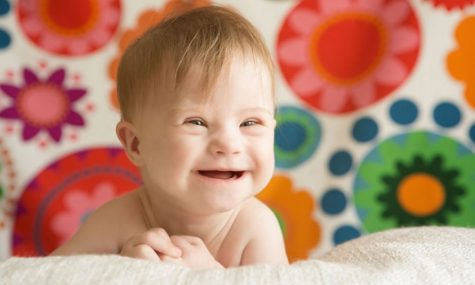
Figure 1: Baby with Down syndrome
Thus, love should not be reciprocated differently based on disability either. As another person from Steinbach’s survey puts it, “[It’s] very offensive that anyone would think you must automatically terminate the pregnancy [if the screening result is positive] … Down syndrome people are people too…accept the child as is, unconditionally, and love him or her.” This love and acceptance is offered by all babies, but not returned in an unaccepting society that marks disabled fetuses as undesirable and deserving of termination. Love, familial and societal, is foundational to a child’s development—the absence of which ultimately affects a disabled person’s quality of life more so than the disability. As a disabled user in Steinbach’s survey remarks, “I have been disabled all my life and just remember how cruel the other children were with their comments. I would not want to put another child through that.” These words testify to the critical role society plays in determining the quality of a disabled person’s life—whether or not there is acceptance integrated in society’s financial and community-wide treatment of disabled people. It is not that disabled people are incapable of finding fulfillment, but that society robs them of that fulfillment by devaluing their achievements, culture, and love as less than that of people without disabilities.
The inherent issue is thus not the existence of disabilities that require more attention, but the way society treats disabilities as unwanted burdens. Especially in the case of selective abortions, “it is not possible to hold people with disabilities in high esteem (or at least equal to their non-disabled counterparts) at the same time as convincing hundreds of thousands of women that they should abort ‘defective’ babies” (Jones). Currently, this lack of acceptance partially results from a funding crisis: prospective parents are discouraged from birthing children with disabilities by hefty medical bills and subsequently pushed towards selective abortions. In Steinbach’s survey, a participant’s daughter “had another son who has apraxia” the respondent said “financially they [daughter and her husband] have had no life at all as there are so many medical bills to be paid. Do they love their son? Oh yes, they do, but in order for him to have a life worth living they had to give up theirs.” Unfortunately, those participants are no small minority. Kennedy’s metanalysis of healthcare coverage uncovers that 30.9% of disabled people (7.3 million people) are unable to pay their medical bills—double that of non-disabled Americans that cannot pay (13.4%). This disparity results in 15.3% of disabled Americans not receiving the medical care they need, triple that of non-disabled people (4.9%). Thus, a lack of acceptance within society is circularly harmful: families who cannot afford childcare may choose to selectively abort a fetus, which sends the implication that they would have otherwise been a financial burden. This financial aid is crucial to the outcome of society’s overall acceptance of disabled people. Indeed, one cannot even begin to imagine a disabled child’s pursuit of fulfillment when they are limited by financial boundaries to raise one in the first place. As such, “personal choices are only worth analyzing when negative limitations (high social and economic cost of having a child with a disability) are eradicated” (Knight).
Kevin Doxzen, a specialist at the Innovative Genomic Institute, argues that any additional policy changes should avoid the subjugation of the majority’s non-disabled opinions and instead follow the Human Rights Impact Assessment (HRIA) as a tool of objective assessment. The majority’s opinion fails to consider disability from the perspective of a disabled individual. Thus, those popular claims around disabled people’s suffering, value of life, etc. become dangerous when people believe they are true just because the majority does. In fact, Zaval and Cornwell’s study of cognitive biases to public perceptions concludes that “public opinion can be highly unstable and is easily manipulated” (qtd in Doxzen). Therefore, a deontological approach—determining ethicality based on a set of predetermined rules—as opposed to a consequentialist approach—determining ethicality based on the level of impact—is necessary to avoid further discrimination. In terms of selective abortions, a consequentialist mindset may support that practice as abortion of disabled children results in a net decrease in suffering—in terms of pain or people who cannot afford healthcare. In contrast, a deontological mindset would not support selective abortions because of the HRIA guideline that all life is valuable; suffering is relative, and individual economic issues are resolvable in alternative ways which do not violate HRIA guidelines. The former approach considers overall consequences but fails to consider what those consequences mean within the perspective of disabled people. Disabled people do not consider themselves subject to constant suffering, so they do not weigh this consequence as one which is true nor one which matters. In this way, consequentialism fails because the weight of certain consequences is subject to change based on perspective. Policy changes hold the most promise to ensure acceptance when approached with a framework of deontology through the HRIA.
With that being said, Ruha Benjamin, associate professor at Princeton who specializes in innovation and equity, warns us from using policy changes as a crutch for structural change. Through selective abortions and more modernly, gene-editing technologies such as CRISPR, society continues to strive for genetic perfection. However, such a standard is impossible to achieve, instead, existing as one we must fight as undesirable in order to procure true structural change. Disability will not define one’s potential, but continues to exist in the core of one’s identity—analogous to race, gender, or sexuality. One cannot slyly “distinguish between a judgment about the person with the disability and a judgment about the disability itself” (Brock) because one’s self and identity lives tied with one’s disability. In every way, one’s differences constitute a facet of diversity. Disability has existed for as long as the belief that ‘all life is valuable’— pervading time and religion, both inherent to our universal human condition.
Footnotes:
1- this analogy is intended to offer a perspective people without disabilities can relate to; however, the analogy breaks down as it approaches the level of severity between conditions
2- polygenic testing is in a prototype phase, one which holds potential, though is currently not an available option to mothers and thus one which is not further considered.
Works Cited
Brock, Dan W. “Preventing Genetically Transmitted Disabilities While Respecting Persons with Disabilities.” Quality of Life and Human Difference: Genetic Testing, Health Care, and Disability, edited by David Wasserman et al., Cambridge UP, 2009, pp. 87-91. Quality of Life and Human Difference. Cambridge Studies in Philosophy and Public Policy., doi:10.1017/CBO9780511614590.004. Accessed 9 Nov. 2020.
Doxzen, Kevin, and Jodi Halpern. “Focusing on Human Rights: A Framework for CRISPR Germline Genome Editing Ethics and Regulation.” Perspectives in Biology and Medicine, vol. 63, no. 1, Winter 2020, pp. 44-53. Project MUSE, doi:10.1353/pbm.2020.0003. Accessed 16 Feb. 2021.
Franklin, Sarah. “Miracle Babies.” Biological Relatives: IVF, Stem Cells, and the Future of Kinship, 2013, doi:10.1215/9780822378259. Accessed 16 Apr. 2021.
Jones, Melinda. “Valuing All Lives—Even ‘Wrongful’ Ones.” Critical Perspectives on Human Rights and Disability Law. Edited by Marcia H. Rioux, Lee Ann Basser and Melinda Jones, Martinus Nuhoff Publishers, 2011, pp. 12-18.
Kennedy, Jae et al. “Disparities in Insurance Coverage, Health Services Use, and Access Following Implementation of the Affordable Care Act: A Comparison of Disabled and Nondisabled Working-Age Adults.” Inquiry : a journal of medical care organization, provision and financing vol. 54 (2017): 46958017734031. doi:10.1177/0046958017734031
Knight, Amber. “Disability and the Meaning of Reproductive Liberty.” Politics, Groups, and Identities, vol. 5, no. 1, 2 Jan. 2017, pp. 67-83. Taylor and Francis, doi:10.1080/21565503.2016.1273120. Accessed 16 Apr. 2021.
Padden, Carol, and Jacqueline Humphries. “Who Goes First? Deaf People and CRISPR Germline Editing.” Perspectives in Biology and Medicine, vol. 63, no. 1, 2020, pp. 54-65. Project Muse, doi:10.1353/pbm.2020.0004. Accessed 19 Mar. 2021.
Rochman, Bonnie. The Gene Machine: How Genetic Technologies Are Changing the Way We Have Kids – and the Kids We Have. E-book, Farrar, Straus and Giroux, 2017.
Steinbach, Rosemary J., et al. “‘This Lifetime Commitment’: Public Conceptions of Disability and Noninvasive Prenatal Genetic Screening.” American Journal of Medical Genetics Part A, vol. 170, no. 2, 14 Nov. 2015, pp. 363-74. US National Library of Medicine National Institutes of Health, doi:10.1002/ajmg.a.37459. Accessed 16 Apr. 2021.

